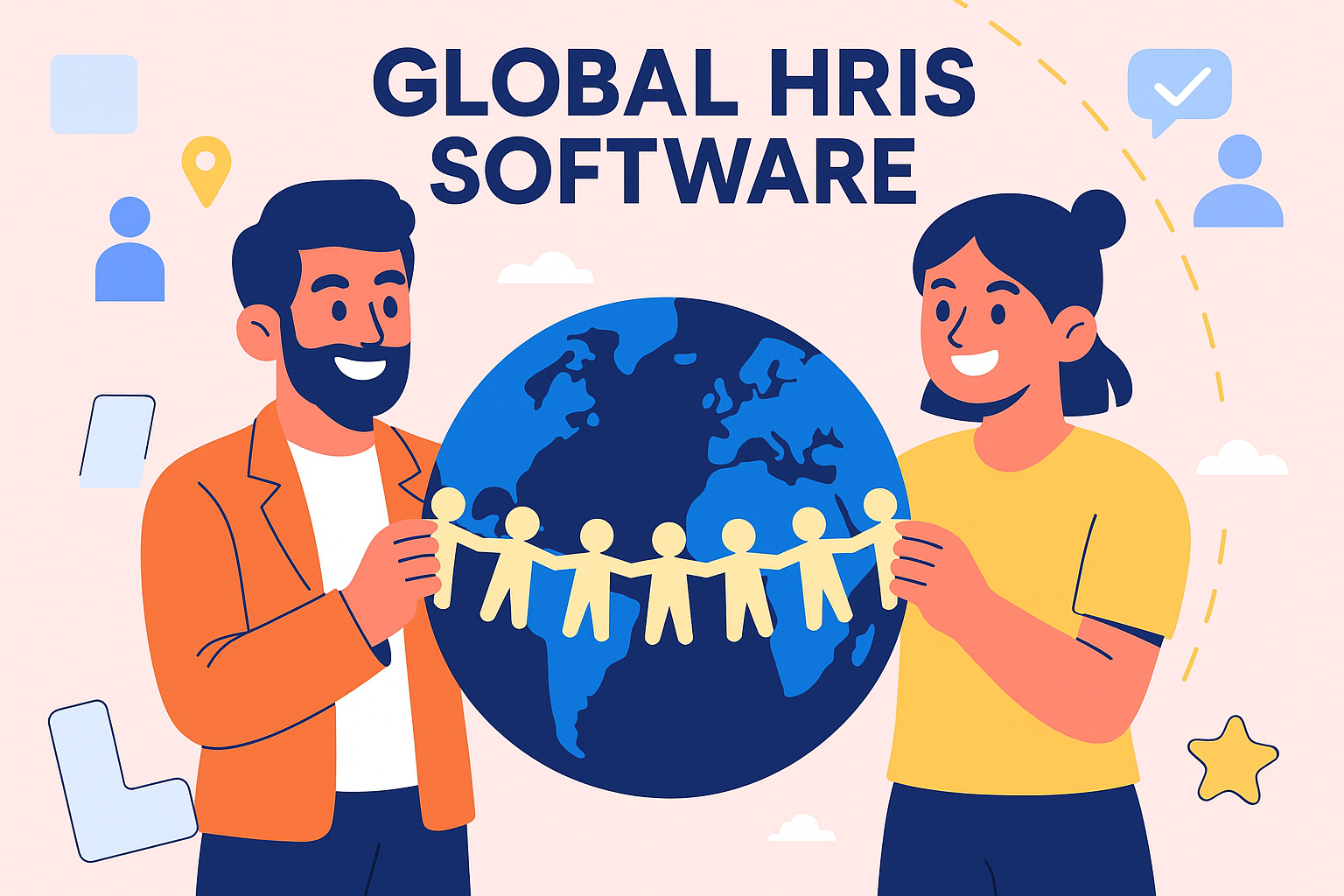Australia is an attractive destination for businesses looking to expand internationally. It boasts a stable political climate and a thriving economy—with a GDP exceeding AUD 1.3 trillion and over 2.3 million actively trading businesses—making it a conducive environment for both startups and established enterprises. Moreover, Australia's diverse and skilled workforce, comprising over 17 million individuals, adds another layer of attraction, offering businesses access to talent adept in global communication and collaboration
However, hiring employees in Australia can be complex as you must adhere to several employment regulations, from federal laws like the Fair Work Act and Superannuation Guarantee Law to industry-specific Awards, among others. Understanding and adhering to these regulations is crucial for ensuring compliance and fostering a mutually beneficial employer-employee relationship.
This comprehensive guide will explain the hiring process in Australia to help you understand the obligations and opportunities, and to ensure seamless entry into the local market, maximizing your chances of success.
Employment Laws You Must Know Before Hiring in Australia
1. Minimum salary of an Australian remote employee
In Australia, every employee is guaranteed a minimum wage, usually determined by the relevant award governing their occupation or industry. Considering that these awards span various sectors, it is important to ensure that they apply to individual roles. This rate undergoes an annual review to reflect current economic conditions and uphold fair compensation standards.
As of 1 July 2023, the National Minimum Wage is $23.23 per hour or $882.80 per week serving as a benchmark for ensuring equitable remuneration across different sectors and employment arrangements.
2. Leave policy
Australia boasts a comprehensive framework of leave policies designed to ensure the well-being and productivity of its workforce.
- Annual leaves
According to the National Employment Standards, in addition to the public holidays, full-time and part-time employees must receive 4 weeks of paid annual leave, commonly called holiday pay. Companies pay the employees with their current base pay rate when they take leave. Employers and employees can mutually agree on when annual leave can be taken, considering business needs and the employee's preferences. When an employee ends a year with unused leaves, they can carry their leaves forward to the next year. You can check out the updated list of public holidays for 2024 in the Fair Work Ombudsman.
- Sick leaves
Full time can take 10 days of paid sick and carer’s leave per year and part-time employees can take a proportion of this depending on their ordinary working hours. Employees can also take up to 2 days of unpaid leave per occasion, in case they have no paid sick or carer’s leave left. Unused sick and carer’s leave is carried over to the next year.
- Parental leave
Australian Employees can take parental leave when,
- They give birth
- Their spouse or de facto partner gives birth
- They adopt a child under 16 years of age
Eligible employees can take up to 12 months of unpaid parental leave, extendable by another 12 months with employer approval. This is applicable only when the employees have worked for their employer for at least 12 months before the expected date.
Pregnant employees can start the leave up to 6 weeks before the expected date of delivery. This leave can be claimed by either of the parents within 24 months of the birth or the placement of the child. Post the leave, the employees also have a legislated right to return to their old jobs.
The primary carer of a newborn or adopted child from 1 July 2023 is entitled to 20 weeks' parental leave pay based on the national minimum wage.
- Family and domestic violence leave
All the employees are entitled to 10 days of paid leave each year, in case they have been subjected to family and/or domestic violence. This includes full-time, part-time, and casual employees.
- Long service leave
Employees who have spent between 5-10 years with the same company are entitled to paid leave that varies from 2 to 3 months, depending on the state or territory. To know more about the long service leaves, check here.
- Community service leave
Employees can take community service leave for activities like voluntary emergency management or jury activity. An employee is entitled to take community service leave while they are engaged in the activity and for reasonable travel and rest time. There is no limit on the amount of community service leave an employee can take. Employers may request the employee to provide evidence that they're entitled to community service leave.
3. Working hours in Australia
According to Australian regulations of the 2009 Fair Work Act, for full-time employees, the standard working hours is 38 hours per week, Monday to Friday. This includes a lunch break ranging between 30 - 60 mins. Any working hours beyond this threshold are classified as overtime.
For part-time employees, the maximum working hours are less than 38 hours per week or the employee’s ordinary work hours in a week, as outlined in the employment contract.
- Overtime exceptions and exemptions
As per the Fair Work Act 2009, employers must not require a full-time employee to work more than 38 hours per week, unless the additional hours are deemed reasonable. Employers can request their employees to work overtime if it is considered reasonable and the employees have all the rights to accept or reject the request to work overtime. When an employee works overtime, he is entitled to be compensated for the additional work done with overtime pay or the choice to take paid time off (PTO). The Modern Awards and Enterprise Agreements detail specific information about the overtime pay rates and conditions as given below.
- 150% of the salary for the first 3 hours of overtime or 1.5 hours of paid time off.
- 200% of the salary for every hour after 3 hours or 2 hours paid time off
- Working during holidays
The total number of working days in Australia varies slightly depending on the state or territory. Weekends are generally considered non-working days for most workers. The total number of working days usually ranges from 251 to 252 days.
When an employee is asked to work on a public holiday, Awards, enterprise agreements, and other registered agreements can provide entitlements for working on those days. They can be compensated with extra pay, an extra day off, or substituting a public holiday for another day. As per Industry Awards, if the employee works on a public holiday, weekend, or rest day, the overtime payment is calculated as follows
- 200% of the hourly salary, paid for normal working hours on a holiday
- 300% of the hourly salary, paid for overtime on a holiday
4. Income tax and deductions
Australia operates under a Pay As You Go (PAYG) withholding system for personal income taxes, where employers deduct tax payments from employees' salaries. Individuals are obligated to file tax returns annually, reporting their worldwide income. Employees contribute 2% of their taxable income to Medicare Ievy, the nation’s public health insurance scheme.
5. Social security
Employees who make $450 per month before tax are entitled to superannuation contributions from their employers. By law, employers must contribute payments on behalf of the employees into the chosen superannuation fund, which serves as a retirement savings scheme for employees in Australia. 10% of an employee’s ordinary earnings is given as a minimum contribution by the employers and the employees can also make additional voluntary contributions to their funds to further boost their retirement savings.
6. Probation period in Australia
In Australia, employers determine probation periods, usually lasting 3 to 6 months. The Fair Work Act stipulates a minimum employment period of 6 months for companies with 15 or more employees and 12 months for small businesses.
7. Employee termination policy
As per the Fair Work Act, employers cannot terminate an employee in Australia without providing proper notice. The employer can let the employee work for the entire notice period or provide payment in lieu of notice. It's essential to document the termination process thoroughly, including the reasons for termination and any discussions or agreements reached with the employee.
As per the National Employment Standards (NES), the following table outlines typical notice periods corresponding to various lengths of service for employees in Australia
What Are the Steps Involved in the Australian Hiring Process?
The hiring process in Australia mirrors the typical hiring process you’re likely used to in your own country. Let’s take a look at it in detail.
Step 1: Assess your hiring needs
Before you hire international employees from Australia, take the time to assess your company's hiring needs thoroughly. Identify gaps in your workforce, forecast future demands, and align hiring goals with your organizational objectives. By understanding the specific skills, experience, and cultural fit required for each role, you can streamline the recruitment process and target suitable candidates more effectively.
Step 2: Create a job posting
Australia boasts a diverse pool of skilled professionals and freelancers across various industries. To effectively tap into the Australian talent pool, consider refining your job posting strategy. Start by identifying the most relevant job boards and craft your job description, emphasizing the unique aspects of the role your company culture, and any distinctive perks your organization offers. Including salary details upfront can also enhance transparency and appeal to potential candidates. Encourage engagement by inviting candidates to reach out with any questions or to learn more about the role. Here are some platforms where you can hire Australian employees or freelancers:
Step 3: Interview candidates
Once you've generated a pool of applicants, focus on screening applications and conducting interviews to identify the most qualified candidates. However, it's important to consider the time zone differences when scheduling virtual interviews with candidates located in Australia.
For instance, if you're based in New York (Eastern Time Zone) and scheduling an interview with a candidate in Sydney (Australian Eastern Standard Time), there's a significant time gap of approximately 14 hours. To accommodate this difference, flexibility is crucial. Let's say you prefer to conduct interviews between 9:00 AM and 5:00 PM Eastern Time. You could offer the candidate time slots between 7:00 PM and 11:00 PM their local time, which would fall within regular working hours in Sydney.
Step 4: Make a job offer
Once you've identified the perfect candidate, it's time to extend a job offer. Start by clearly outlining the terms of employment, including salary, benefits, and any additional perks. Ensure your offer aligns with local laws and standards, covering crucial aspects like minimum wage requirements and entitlements. Craft a contract that comprehensively outlines the roles, responsibilities, and expectations of both parties. Consider including provisions for remote work arrangements, if applicable, and any specific Australian employment regulations. Prioritize clear communication throughout the offer process to address any questions or concerns the candidate may have. Providing a well-defined job offer and contract ensures a smooth transition for the new hire and creates a positive employer-employee relationship from the outset.
Onboard new employees
Once you've found the right candidate and conducted background checks, it's time to onboard them effectively, especially if they're remote workers. Setting clear expectations and providing the necessary tools and resources are vital for their success. Here's how you can streamline the onboarding process:
- Clearly outline the role, responsibilities, and expectations from the outset. This includes communication channels, work hours, and performance metrics.
- Ensure remote workers have access to all necessary tools and resources, including communication platforms, project management software, and any specific tools relevant to their role.
- Provide comprehensive training to familiarize remote workers with company policies, procedures, and systems. Assign a mentor to offer support and guidance during the initial stages.
How To Hire in Australia
- Open a legal entity
Companies can hire in Australia by setting up a legal entity. This process involves registering your company with the Australian Securities and Investments Commission (ASIC) and obtaining an Australian Business Number (ABN). While establishing a legal entity provides autonomy and control, it can be a costly endeavor. From registration fees to ongoing compliance costs, the financial burden can quickly add up, especially for small businesses and startups. Therefore, entrepreneurs should carefully weigh the benefits against the expenses before committing to this route.
- Partner with a Global Employer of Record
The simplest way to hire Australian employees for your company is by partnering with a global Employer of Record (EOR). Acting as the legal employer for your workforce, An EOR takes care of employee management, payroll, tax compliance, global benefits, and employment contracts on your behalf. This arrangement enables companies to navigate the complexities of Australian employment laws and regulations while focusing on their core business activities. Partnering with an EOR lets you expand your company’s horizons, without the need to set up a legal entity in the respective country. Read this article on how to choose the right EOR for your business needs.
Simplify Global Hiring and Compliance with Gloroots
Looking to expand into Australia or anywhere around the globe, compliantly and effortlessly? Gloroots is your ultimate solution, handling everything from seamless onboarding to hassle-free payroll management. From onboarding to payroll Gloroots offers a comprehensive Employer of Record (EOR) solution, simplifying global workforce management with efficiency and compliance at its core.
- Compliance: Gloroots ensures meticulous adherence to local labor laws, mitigating the risks of misclassification. Our process includes automated form collection and electronic filing, guaranteeing legally airtight agreements.
- Effortless Payroll Management: Gloroots offers multi-currency payment options with automated payroll calculations, including tax withholdings and deductions, ensuring precise and prompt compensation regardless of location.
- Local Expertise: With an in-depth understanding of labor laws and tax regulations in 140+ countries, Gloroots ensures benefits compliance and stays updated on regulation changes, offering personalized support and advice.
- Transparent Oversight: Our intuitive dashboard offers real-time insights into contractor onboarding status and working hours, enabling transparent and fair compensation. This visibility into employment expenses facilitates informed decision-making.
With Gloroots, you can onboard talent in under a day, enabling you to explore new markets and expand your operations swiftly. Our dedicated compliance experts are available 24x7 to guide you through every step, from onboarding to offboarding, ensuring a risk-free and compliant experience. Take the next step towards global hiring success today.

.webp)




























.webp)
























.webp)


.webp)


.webp)












